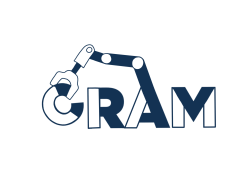CRAM is a toolbox for designing, implementing and deploying software on autonomous robots. The framework provides various tools and libraries for aiding in robot software development as well as geometric reasoning and fast simulation mechanisms to develop cognition-enabled control programs that achieve high lev- els of robot autonomy. CRAM also provides tools for introspection that enable the robots to reason about their past executions and improve by autonomously optimizing their plans.
The core packages of CRAM are implemented in Common Lisp (with a little bit of C/C++) with support to the ROS middleware infrastructure.
- If you wish to install cram please follow the instruction here: cram-installation guide.
- cram_3d_world Bullet physics engine-based and OpenGl offscreen rendering-based reasoning mechanisms.
- cram_3rdparty 3rd party Lisp liabraries wrapped into ROS packages.
- cram_boxy Hardware interface for using Boxy robot in CRAM and lightweight simulation.
- cram_common Common libraries building on top of CRAM core. Including costmap and implementations.
- cram_core Tools and Interfaces for writing Cognition-Enabled Reactive Concurrent Plans.
- cram_json_prolog ROS JSON Prolog client implementation in Lisp: sending Prolog queries in JSON format over ROS.
- cram_knowrob Libraries for using knowrob in Lisp.
- cram_pr2 CRAM packages related to the PR2, e.g. process modules, costmaps and lightweight simulation of PR2 robot. Also, fetch and deliver plans for PR2 robot.
- cram_roboserlock Interface for communicating with RoboSherlock from CRAM.
- cram_tutorials Tutorials for: cram-turtorials.
